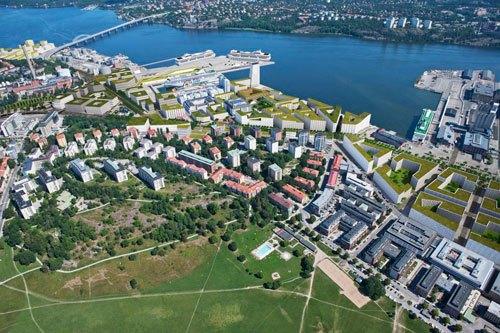
We know that cities are growing bigger, smarter and more connected, but which cities are best connected and which ones are growing their capabilities most quickly? A recent survey by communication technology provider Ericsson evaluates 40 leading cities around the world for their level of information and communication technology (ICT) maturity.
What the study found was that cities that were ranked lower are growing more quickly, thus beginning to catch up with those at the head of the pack.
The cities found to have the highest level of ICT maturity were Stockholm, London, Paris, Singapore and Copenhagen. Only three U.S. cities made the list, with New York coming in seventh, Los Angeles 11th and Miami 15th.
The report claims that ICT will form future cities, the way the railroad formed London and the highway formed Los Angeles. That may well be, though it seems that ICT is far less place-dependent than those other defining innovations were. Perhaps it is more a matter of how future cities will utilize their technology that will define them and distinguish them from others.
Because, as the report states, “it is not enough to simply invest in new ICT infrastructure. For this infrastructure to be fully utilized, it must be applied in new ways and turned into a vital resource for innovation involving people, businesses and city governments. Without compelling and useful applications, there will be no benefits for the individuals and the city as a whole.”
This provides a challenge and an opportunity to city leaders. “To get the full benefits of ICT infrastructure, city leadership needs to master its use of ICT to boost the city’s economy and competitiveness; provide services; and develop urban environment, quality of life and community collaboration.”
The report finds a strong correlation between the level of ICT maturity and Triple Bottom Line (TBL) which consists of eight indicators that measure social, economic and environmental status: health, education, social inclusion, productivity, competitiveness, resources, pollution, and climate change. These are matched along with the 7 ICT variables that measure infrastructure, affordability and usage status: broadband quality, availability, tariffs, IP transit prices, technology use, individual use, public and market use.
The linkage between the two plays out on multiple dimensions. A high level of ICT maturity provides the means to not only achieve improved efficiencies and resource productivity, but it provides for increased transparency as well. It also provides mechanisms to allow citizens to become more aware of and involved in their communities and for collaboration to be formed across various groups of stakeholders.
These relationships have led the authors to make three predictions.
- People power, rather than institutions will drive urban development
- GDP will be redefined to capture a new scope of growth
- Collaboration will restructure organizations
The common denominator of these three is increased participation in the community that implicitly leads to a more thriving and flourishing state of existence.
Indeed, these are the terms used by the authors of the new book Flourishing Enterprise, when they say that, “Flourishing is not anchored in mundane notions of continuity. It’s not about passing along what is now available….It’s about thriving, doing well, prospering, growing or developing in a vigorous way, especially as the result of a particularly congenial environment.”
This echoes the report authors’ predictions, when they talk about, “people self-organizing to establish cooperative initiatives that tackle social problems, improve living conditions, increase collaboration, or – in countless other ways – make their cities better places to live.”
Image courtesy of Ericsson.
RP Siegel, PE, is an author, inventor and consultant. He has written for numerous publications ranging from Huffington Post to Mechanical Engineering. He and Roger Saillant co-wrote the successful eco-thriller Vapor Trails. RP, who is a regular contributor to Triple Pundit and Justmeans, sees it as his mission to help articulate and clarify the problems and challenges confronting our planet at this time, as well as the steadily emerging list of proposed solutions. His uniquely combined engineering and humanities background help to bring both global perspective and analytical detail to bear on the questions at hand.
Follow RP Siegel on Twitter.

RP Siegel (1952-2021), was an author and inventor who shined a powerful light on numerous environmental and technological topics. His work appeared in TriplePundit, GreenBiz, Justmeans, CSRWire, Sustainable Brands, Grist, Strategy+Business, Mechanical Engineering, Design News, PolicyInnovations, Social Earth, Environmental Science, 3BL Media, ThomasNet, Huffington Post, Eniday, and engineering.com among others . He was the co-author, with Roger Saillant, of Vapor Trails, an adventure novel that shows climate change from a human perspective. RP was a professional engineer - a prolific inventor with 53 patents and President of Rain Mountain LLC a an independent product development group. RP was the winner of the 2015 Abu Dhabi Sustainability Week blogging competition. RP passed away on September 30, 2021. We here at TriplePundit will always be grateful for his insight, wit and hard work.














